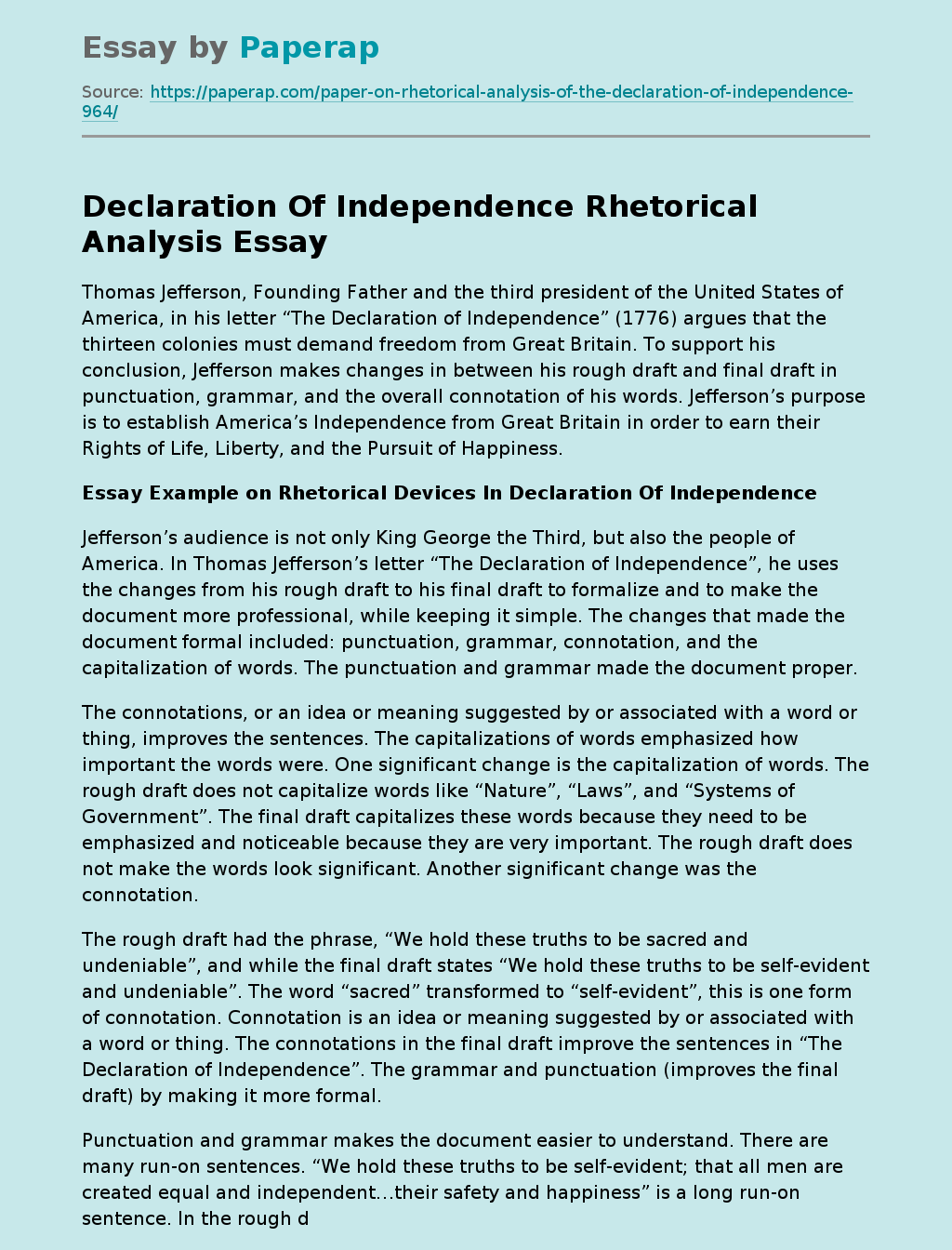Declaration Of Independence Rhetorical Analysis
Thomas Jefferson, Founding Father and the third president of the United States of America, in his letter “The Declaration of Independence” (1776) argues that the thirteen colonies must demand freedom from Great Britain. To support his conclusion, Jefferson makes changes in between his rough draft and final draft in punctuation, grammar, and the overall connotation of his words. Jefferson’s purpose is to establish America’s Independence from Great Britain in order to earn their Rights of Life, Liberty, and the Pursuit of Happiness.
Essay Example on Rhetorical Devices In Declaration Of Independence
Jefferson’s audience is not only King George the Third, but also the people of America. In Thomas Jefferson’s letter “The Declaration of Independence”, he uses the changes from his rough draft to his final draft to formalize and to make the document more professional, while keeping it simple. The changes that made the document formal included: punctuation, grammar, connotation, and the capitalization of words. The punctuation and grammar made the document proper.
The connotations, or an idea or meaning suggested by or associated with a word or thing, improves the sentences. The capitalizations of words emphasized how important the words were. One significant change is the capitalization of words. The rough draft does not capitalize words like “Nature”, “Laws”, and “Systems of Government”. The final draft capitalizes these words because they need to be emphasized and noticeable because they are very important. The rough draft does not make the words look significant. Another significant change was the connotation.
The rough draft had the phrase, “We hold these truths to be sacred and undeniable”, and while the final draft states “We hold these truths to be self-evident and undeniable”. The word “sacred” transformed to “self-evident”, this is one form of connotation. Connotation is an idea or meaning suggested by or associated with a word or thing. The connotations in the final draft improve the sentences in “The Declaration of Independence”. The grammar and punctuation (improves the final draft) by making it more formal.
Punctuation and grammar makes the document easier to understand. There are many run-on sentences. “We hold these truths to be self-evident; that all men are created equal and independent…their safety and happiness” is a long run-on sentence. In the rough draft it states “he has plundered our seas, ravaged our coasts, burnt our towns and destroyed the lives of our people”, but in the final draft it adds the comma after “towns” to emphasize and make the sentences proper. These additions made this document become professional.
In conclusion, the changes that took place in between the rough and final draft made the letter look advanced and well qualified. The punctuation and grammar improves and makes the letter proper. The capitalizations emphasize that the words are important. The connotations improved the letter, but overall the changes were a positive thing towards “The Declaration of Independence”. The document affected everyone, all over the United States then, and now, with the addition of the British.
Declaration Of Independence Rhetorical Analysis. (2019, Nov 27). Retrieved from https://paperap.com/paper-on-rhetorical-analysis-of-the-declaration-of-independence-964/

